-
 Bitcoin
Bitcoin $116900
0.00% -
 Ethereum
Ethereum $4280
5.48% -
 XRP
XRP $3.265
-1.45% -
 Tether USDt
Tether USDt $1.000
-0.01% -
 BNB
BNB $807.0
1.41% -
 Solana
Solana $183.1
2.93% -
 USDC
USDC $0.9999
0.00% -
 Dogecoin
Dogecoin $0.2440
6.50% -
 TRON
TRON $0.3357
-0.88% -
 Cardano
Cardano $0.8178
2.63% -
 Hyperliquid
Hyperliquid $44.13
7.45% -
 Chainlink
Chainlink $21.39
9.09% -
 Stellar
Stellar $0.4524
-0.84% -
 Sui
Sui $3.957
2.13% -
 Bitcoin Cash
Bitcoin Cash $572.7
-2.54% -
 Hedera
Hedera $0.2671
1.54% -
 Avalanche
Avalanche $24.77
4.17% -
 Ethena USDe
Ethena USDe $1.001
0.02% -
 Litecoin
Litecoin $122.3
-1.94% -
 Toncoin
Toncoin $3.432
2.26% -
 UNUS SED LEO
UNUS SED LEO $9.007
0.49% -
 Shiba Inu
Shiba Inu $0.00001396
5.26% -
 Uniswap
Uniswap $11.09
1.64% -
 Polkadot
Polkadot $4.155
4.57% -
 Dai
Dai $1.000
0.00% -
 Pepe
Pepe $0.00001253
5.11% -
 Cronos
Cronos $0.1588
2.67% -
 Bitget Token
Bitget Token $4.512
0.05% -
 Monero
Monero $275.0
0.64% -
 Ethena
Ethena $0.7527
15.10%
Can USDT be recovered if it is lost? How to keep the private key?
If you lose your USDT, recovery depends on the situation; always secure your private key with backups and hardware wallets to prevent permanent loss.
May 10, 2025 at 06:21 pm
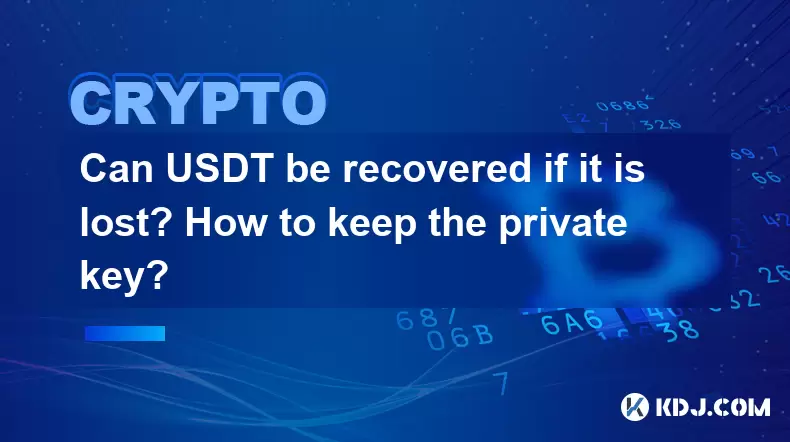
Can USDT be recovered if it is lost? How to keep the private key?
The world of cryptocurrencies, particularly Tether (USDT), often raises concerns about the security and recoverability of lost funds. If you've lost your USDT, the possibility of recovery depends on several factors. Additionally, safeguarding the private key is crucial for maintaining the security of your cryptocurrency holdings. This article delves into the intricacies of USDT recovery and provides a detailed guide on how to keep your private key safe.
Understanding USDT Loss and Recovery
USDT, or Tether, is a stablecoin pegged to the US dollar, designed to maintain a 1:1 value ratio. Losing USDT can occur in various ways, such as sending it to the wrong address, falling victim to scams, or losing access to your wallet due to forgotten passwords or lost private keys. The recoverability of lost USDT hinges on the circumstances of the loss.
Incorrect Address: If you've sent USDT to an incorrect address, recovery is highly unlikely. Blockchain transactions are irreversible, and once the USDT is sent, it cannot be retrieved unless the recipient willingly returns it.
Scams and Hacks: In cases where you've been scammed or hacked, recovery is also challenging. Reporting the incident to the platform or exchange where the transaction occurred may help, but there's no guarantee of recovery. Some exchanges offer insurance or have recovery mechanisms, but these are not always effective.
Lost Private Keys or Passwords: If you've lost access to your wallet due to forgotten passwords or misplaced private keys, recovery is possible if you have a backup or if you use a wallet that supports password recovery. However, without a backup, your USDT is effectively lost.
Steps to Attempt USDT Recovery
If you find yourself in a situation where you've lost your USDT, here are some steps you can take to attempt recovery:
Contact the Recipient: If you've sent USDT to the wrong address, try to contact the recipient. This is often impossible, but if you can reach them, they might return your funds.
Report to the Platform: If the loss occurred through a centralized exchange or platform, report the incident immediately. Provide all necessary details and evidence. Some platforms have recovery procedures or insurance that might help.
Use Recovery Tools: Some wallets offer recovery tools for forgotten passwords. If you're using such a wallet, follow their recovery process carefully.
Seek Professional Help: In complex cases, consider hiring a professional blockchain forensic service. These services can sometimes trace and recover lost funds, but they come at a cost and success is not guaranteed.
Importance of Private Key Management
The private key is the cornerstone of cryptocurrency security. It's a unique string of characters that grants access to your wallet and the funds within. Losing your private key means losing access to your USDT and other cryptocurrencies permanently. Therefore, managing your private key effectively is paramount.
Best Practices for Keeping Your Private Key Safe
To ensure the safety of your private key, follow these best practices:
Use Hardware Wallets: Hardware wallets, like Ledger or Trezor, store your private key offline, making it much harder for hackers to access. These devices are highly secure and recommended for significant holdings.
Create Multiple Backups: Always create multiple backups of your private key. Store these backups in different secure locations, such as a safe deposit box, a fireproof safe, or a secure digital storage solution.
Encrypt Your Backups: If you store your private key digitally, encrypt it using strong encryption software. This adds an extra layer of security, making it difficult for unauthorized parties to access your key.
Use a Passphrase: Many wallets allow you to add a passphrase to your private key. This adds an additional layer of security, making it even harder for someone to access your funds without the passphrase.
Avoid Sharing Your Key: Never share your private key with anyone. Scammers often pose as customer support or other trusted entities to trick you into revealing your key. Always verify the identity of anyone requesting your key.
Regularly Check Your Wallets: Periodically check your wallets and ensure that your private key remains secure. Update your security measures as needed and stay informed about the latest security practices.
Common Mistakes to Avoid
Even with the best intentions, mistakes can lead to the loss of your USDT and private key. Here are some common pitfalls to avoid:
Not Backing Up Your Key: Failing to create backups of your private key is a critical mistake. Without a backup, you risk losing your funds permanently if anything happens to your primary key.
Storing Your Key Online: Storing your private key online, especially on unencrypted or insecure platforms, is highly risky. Online storage increases the chances of your key being compromised by hackers.
Using Weak Passwords: Using weak or easily guessable passwords for your wallet or encrypted backups can lead to unauthorized access. Always use strong, unique passwords and consider using a password manager.
Falling for Phishing Scams: Phishing scams are prevalent in the cryptocurrency space. Always verify the authenticity of any website or communication before entering your private key or other sensitive information.
Frequently Asked Questions
Q: Can I recover my USDT if I've lost my private key but have a backup?
A: Yes, if you have a backup of your private key, you can recover your USDT. Use the backup to access your wallet and regain control of your funds. Ensure that your backup is stored securely and is accessible when needed.
Q: Is it safe to store my private key on a cloud storage service?
A: Storing your private key on a cloud storage service is generally not recommended due to the risk of hacking and unauthorized access. If you must use cloud storage, ensure that the key is heavily encrypted and that you use a reputable, secure service.
Q: What should I do if I suspect my private key has been compromised?
A: If you suspect your private key has been compromised, immediately transfer your USDT to a new wallet with a new private key. Monitor your transactions closely and consider using a hardware wallet for enhanced security.
Q: Can I use the same private key for multiple wallets?
A: Using the same private key for multiple wallets is not advisable. If one wallet is compromised, all wallets using the same key are at risk. It's best to use a unique private key for each wallet to maintain the highest level of security.
Disclaimer:info@kdj.com
The information provided is not trading advice. kdj.com does not assume any responsibility for any investments made based on the information provided in this article. Cryptocurrencies are highly volatile and it is highly recommended that you invest with caution after thorough research!
If you believe that the content used on this website infringes your copyright, please contact us immediately (info@kdj.com) and we will delete it promptly.
- XRP Price, Remittix, and Ripple Rivals: A Crypto Cocktail
- 2025-08-10 10:50:16
- Live Crypto Updates, August 10: ETH Soars, Trump's Crypto Play, and More!
- 2025-08-10 11:30:16
- Riding the Wave: Ethereum, DeFi, and the Liquid Staking Derivatives (LSDs) Surge
- 2025-08-10 10:30:15
- Strobe Ventures, ENA Tokens, and the Surge: What's the Deal?
- 2025-08-10 10:35:15
- Shiba Inu, Pepe, and Remittix: A Tale of Memes, Hype, and Real-World Utility
- 2025-08-10 08:30:12
- Ethereum Price, ETH Tokens, Rally Prediction: Is a New All-Time High In Sight?
- 2025-08-10 08:30:12
Related knowledge
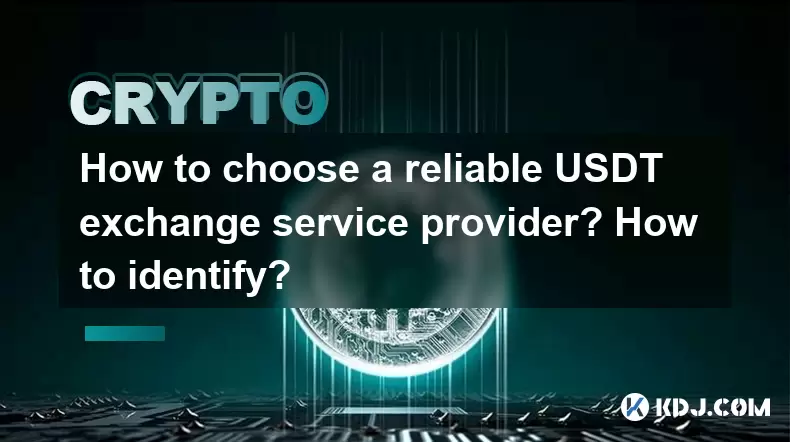
How to choose a reliable USDT exchange service provider? How to identify?
Jun 12,2025 at 03:15pm
Understanding the Role of USDT in Cryptocurrency TradingUSDT (Tether) is one of the most widely used stablecoins in the cryptocurrency market. It is d...
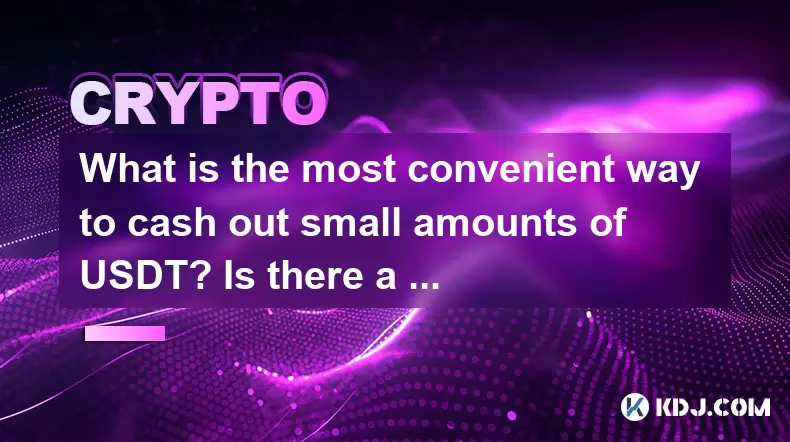
What is the most convenient way to cash out small amounts of USDT? Is there a shortcut?
Jun 11,2025 at 11:00pm
Understanding the Need to Cash Out Small USDT AmountsCashing out small amounts of USDT can be a challenge for many crypto users. Traditional methods o...
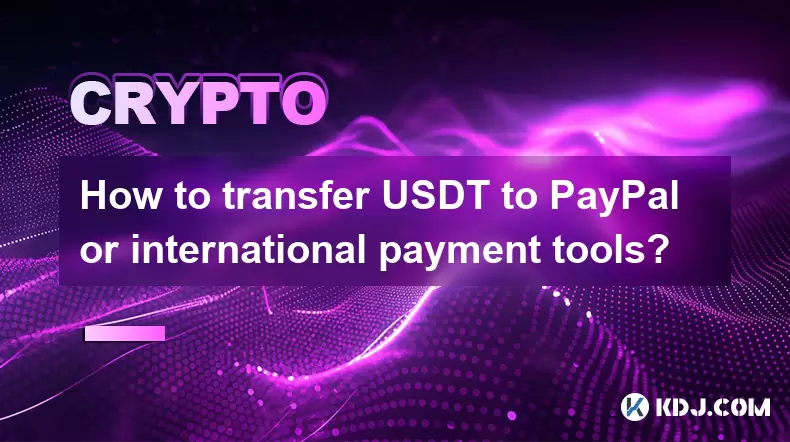
How to transfer USDT to PayPal or international payment tools?
Jun 15,2025 at 05:28am
Understanding the Basics of USDT and PayPal IntegrationUSDT (Tether) is a stablecoin pegged to the US dollar, offering blockchain-based value transfer...
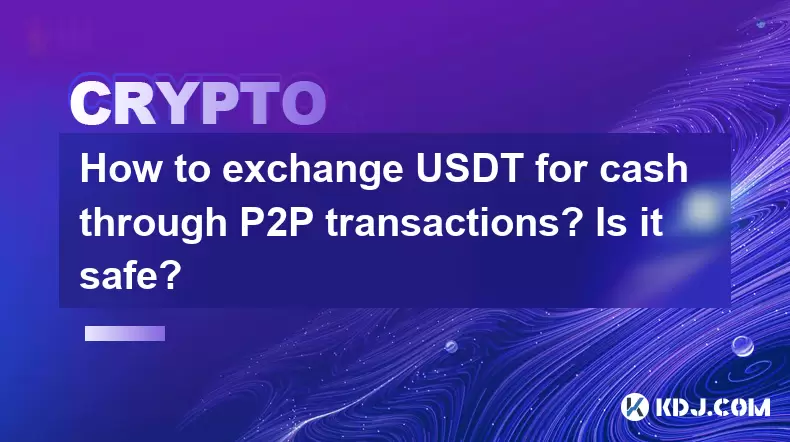
How to exchange USDT for cash through P2P transactions? Is it safe?
Jun 18,2025 at 07:56am
Understanding USDT and P2P TransactionsTether (USDT) is a stablecoin pegged to the value of the US dollar, making it a popular choice for users who wa...
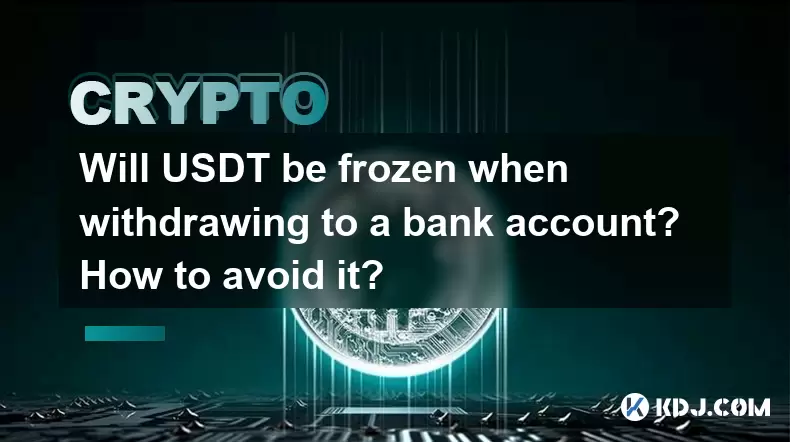
Will USDT be frozen when withdrawing to a bank account? How to avoid it?
Jun 15,2025 at 10:03am
Understanding USDT Withdrawals and Bank Account Freezing RisksWhen users decide to withdraw USDT (Tether) to a bank account, one of the most common co...

How to avoid risks when exchanging USDT for cash? What are the pitfalls?
Jun 11,2025 at 08:14pm
Understanding the Risks of Exchanging USDT for CashWhen exchanging USDT (Tether) for cash, users must be aware of the potential risks involved. As a s...

How to choose a reliable USDT exchange service provider? How to identify?
Jun 12,2025 at 03:15pm
Understanding the Role of USDT in Cryptocurrency TradingUSDT (Tether) is one of the most widely used stablecoins in the cryptocurrency market. It is d...

What is the most convenient way to cash out small amounts of USDT? Is there a shortcut?
Jun 11,2025 at 11:00pm
Understanding the Need to Cash Out Small USDT AmountsCashing out small amounts of USDT can be a challenge for many crypto users. Traditional methods o...

How to transfer USDT to PayPal or international payment tools?
Jun 15,2025 at 05:28am
Understanding the Basics of USDT and PayPal IntegrationUSDT (Tether) is a stablecoin pegged to the US dollar, offering blockchain-based value transfer...

How to exchange USDT for cash through P2P transactions? Is it safe?
Jun 18,2025 at 07:56am
Understanding USDT and P2P TransactionsTether (USDT) is a stablecoin pegged to the value of the US dollar, making it a popular choice for users who wa...

Will USDT be frozen when withdrawing to a bank account? How to avoid it?
Jun 15,2025 at 10:03am
Understanding USDT Withdrawals and Bank Account Freezing RisksWhen users decide to withdraw USDT (Tether) to a bank account, one of the most common co...

How to avoid risks when exchanging USDT for cash? What are the pitfalls?
Jun 11,2025 at 08:14pm
Understanding the Risks of Exchanging USDT for CashWhen exchanging USDT (Tether) for cash, users must be aware of the potential risks involved. As a s...
See all articles

























































































